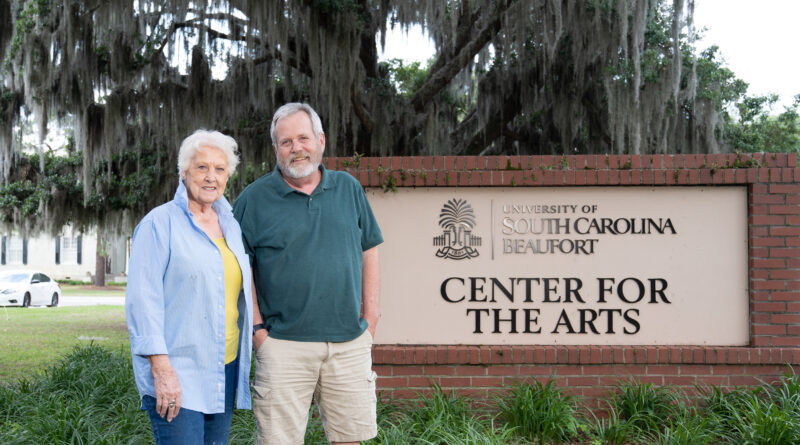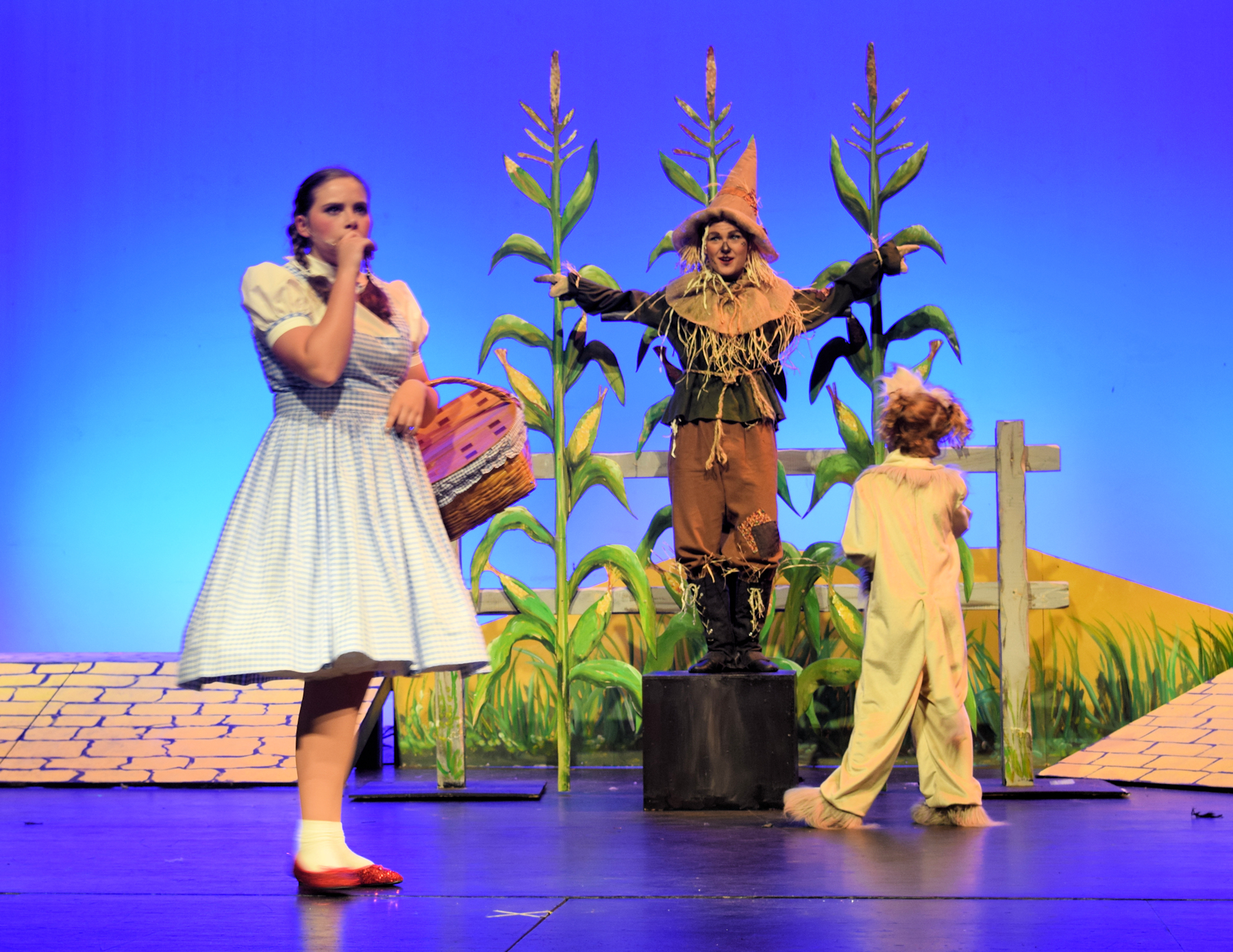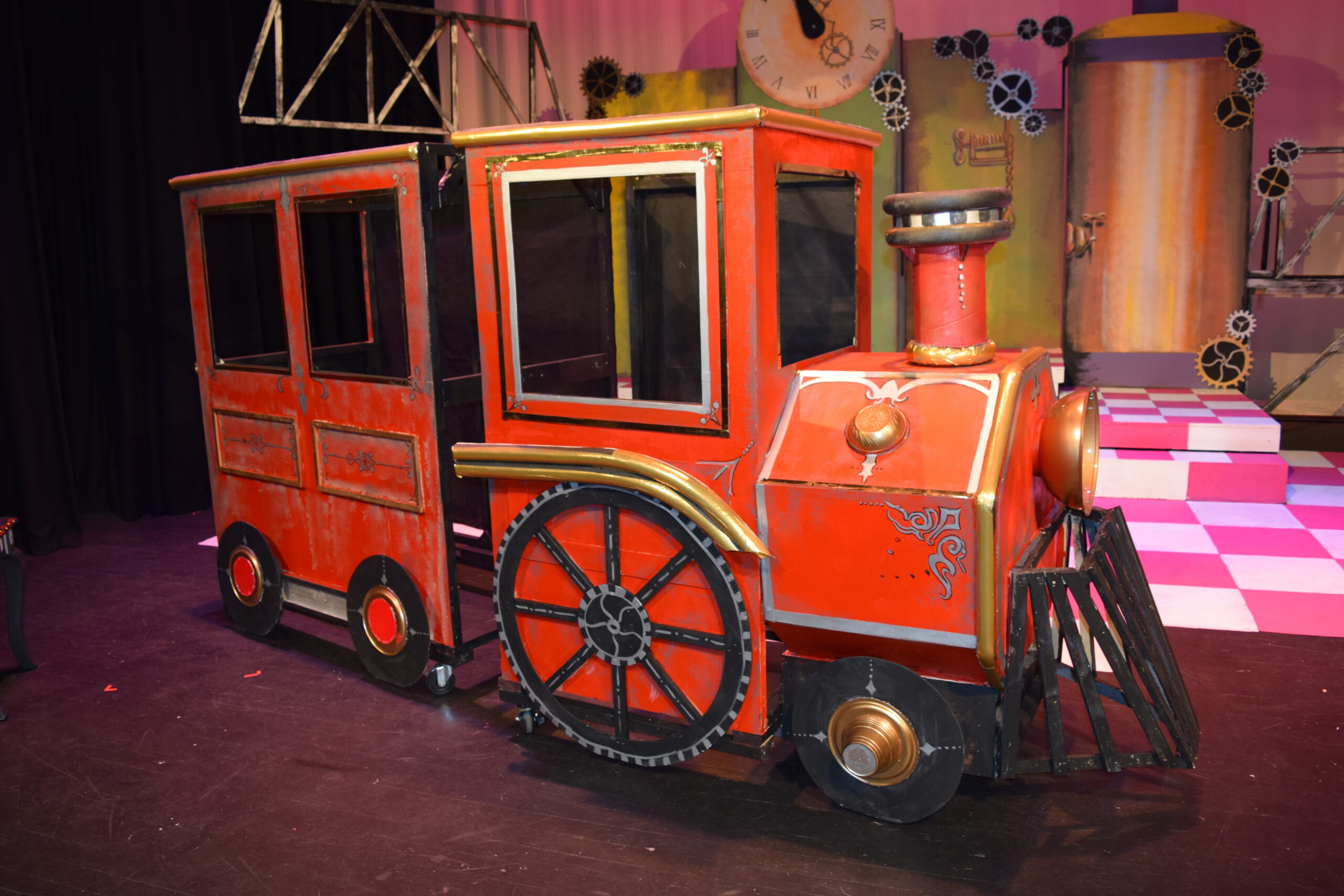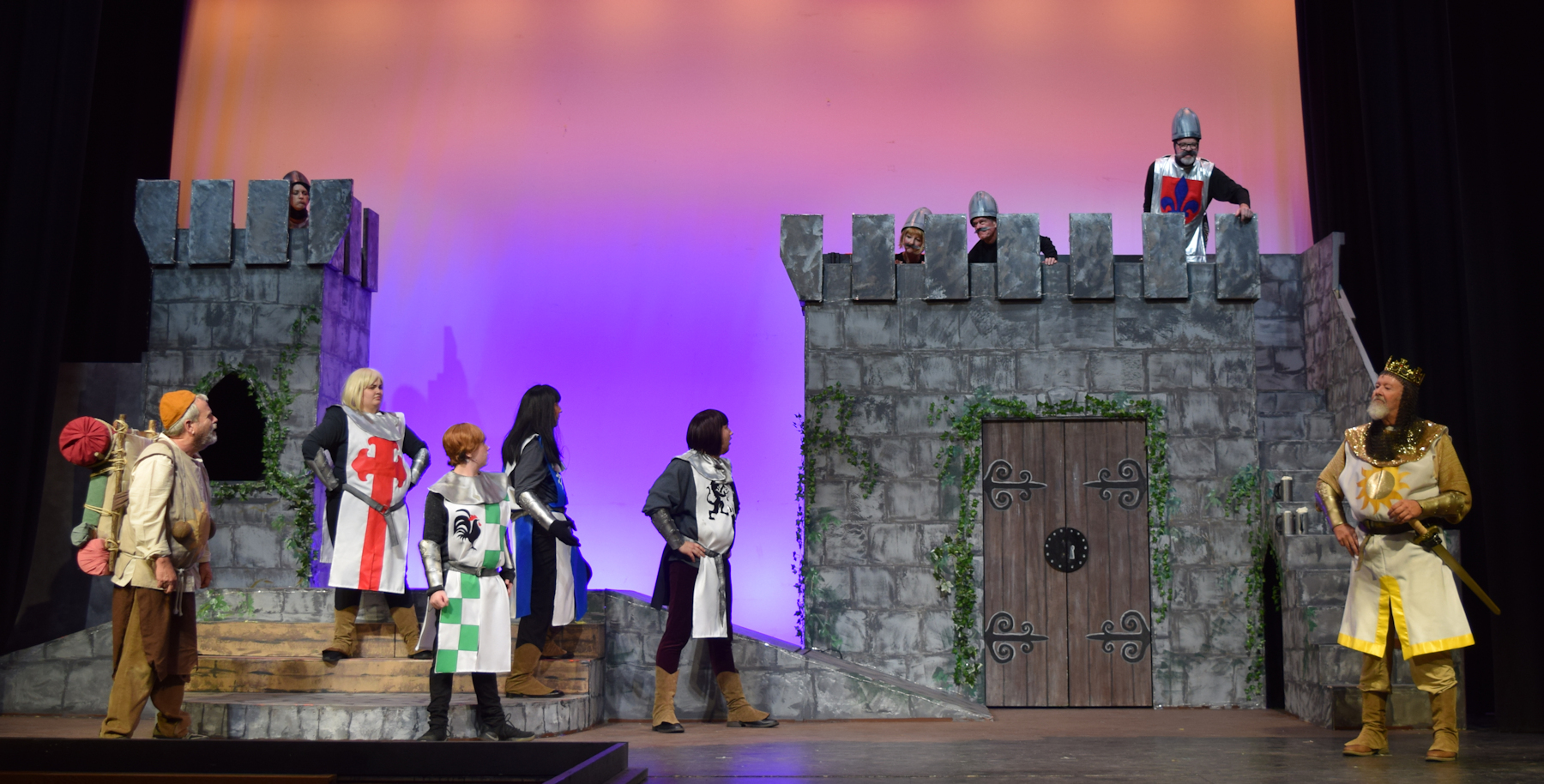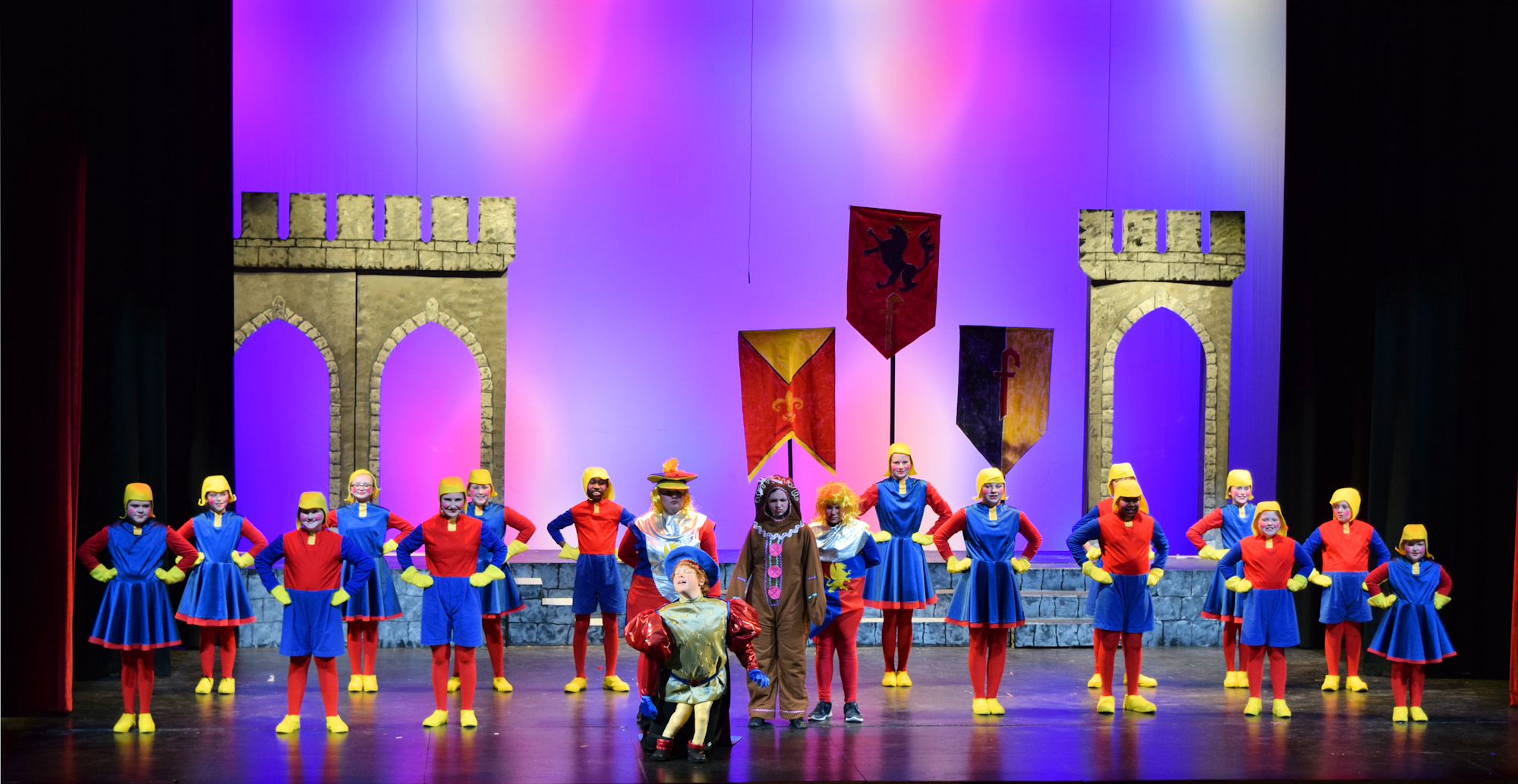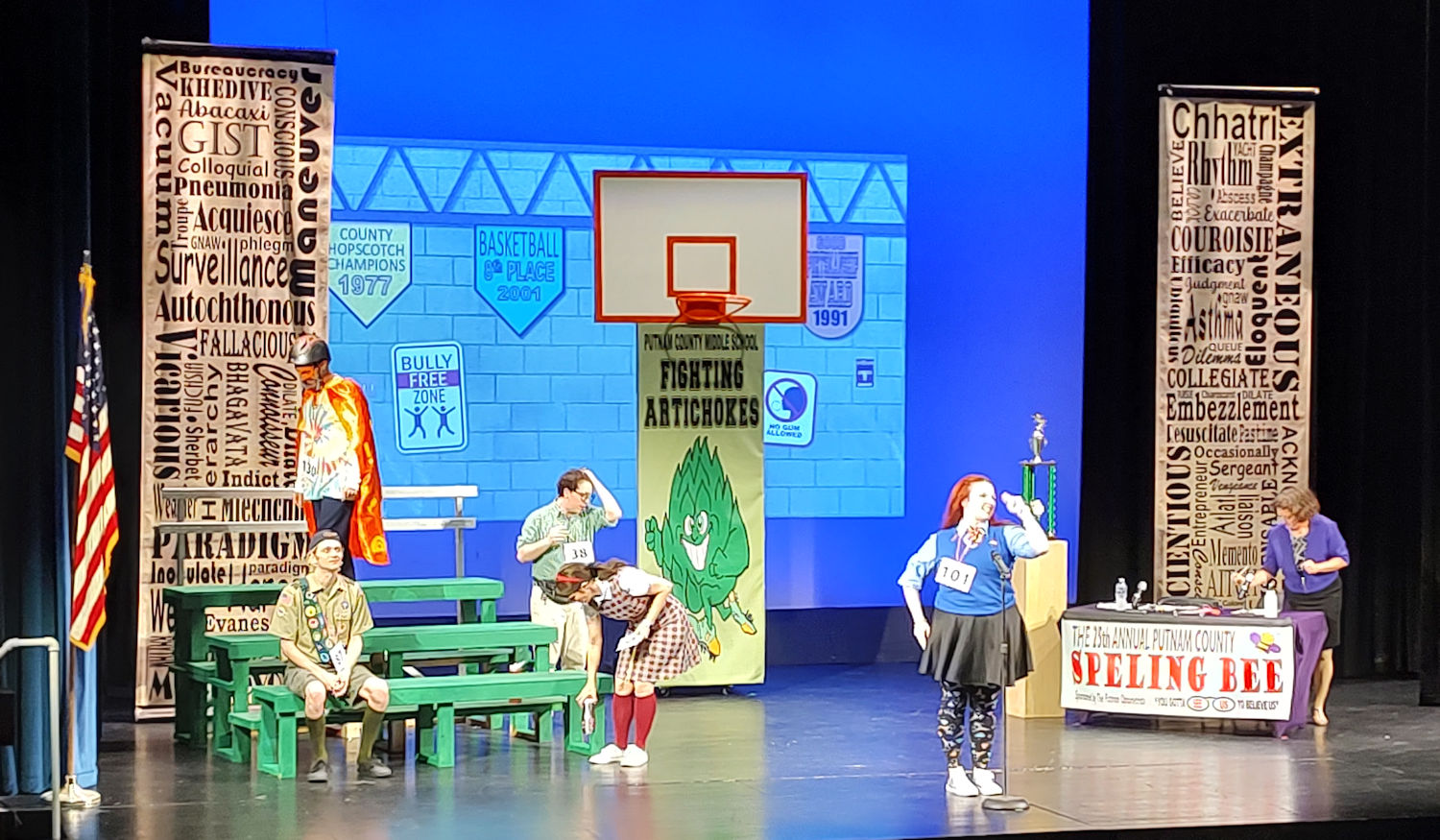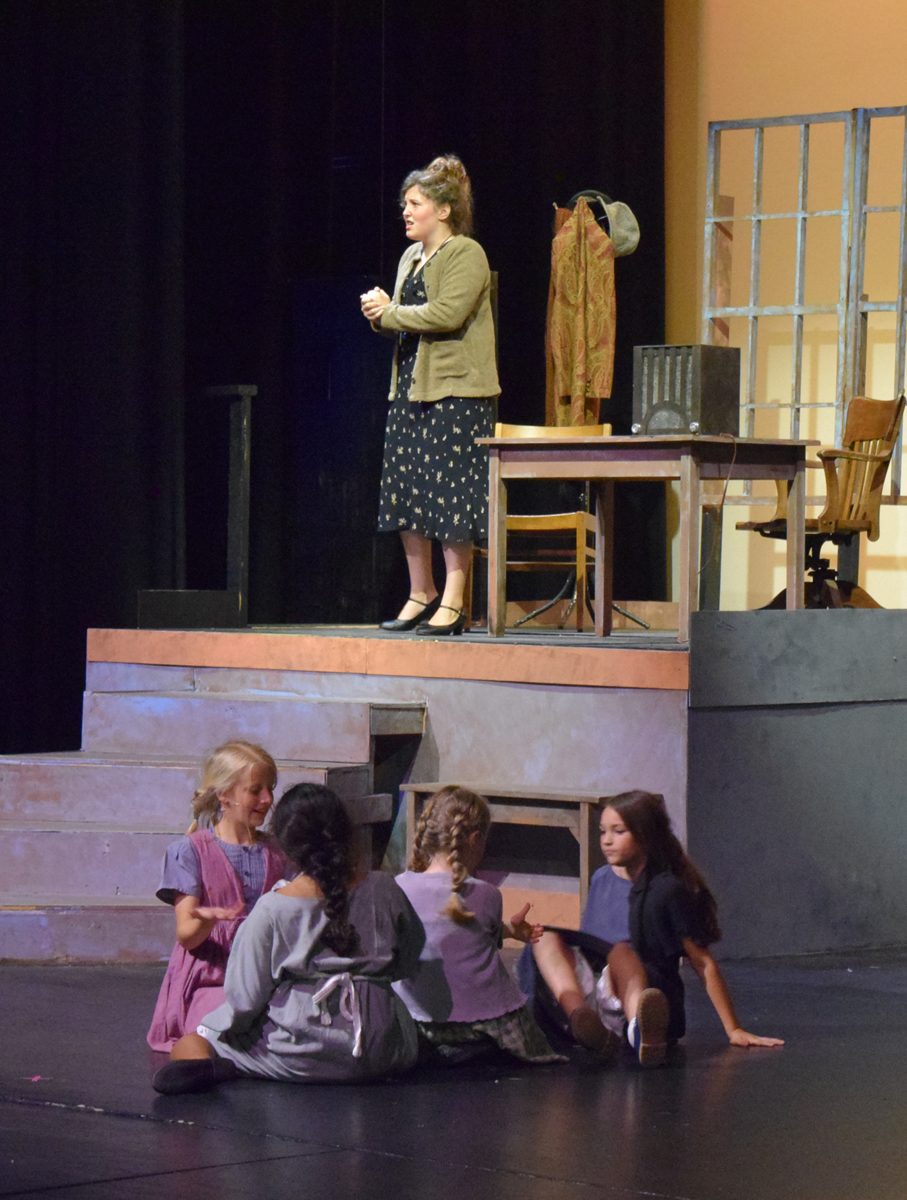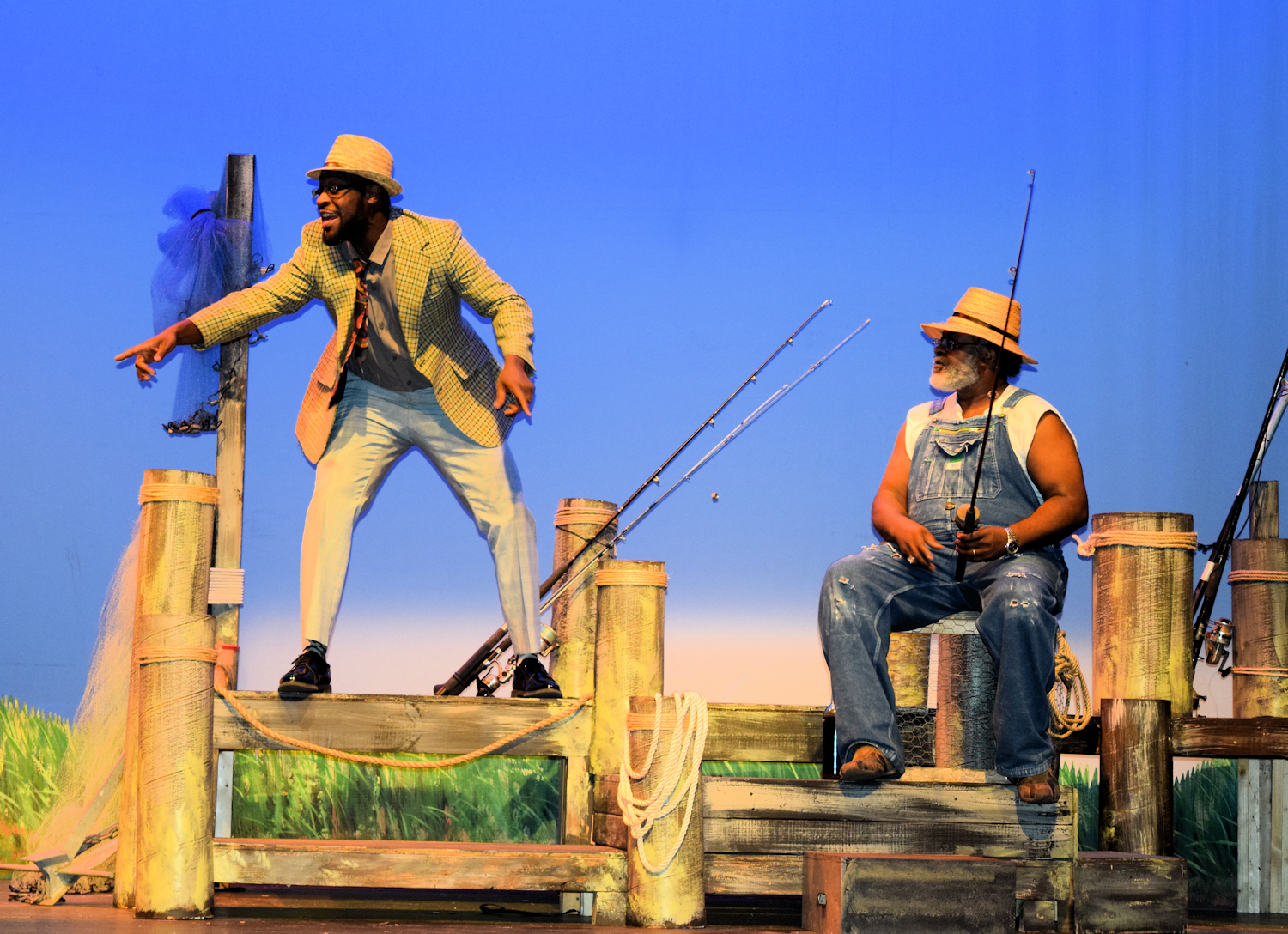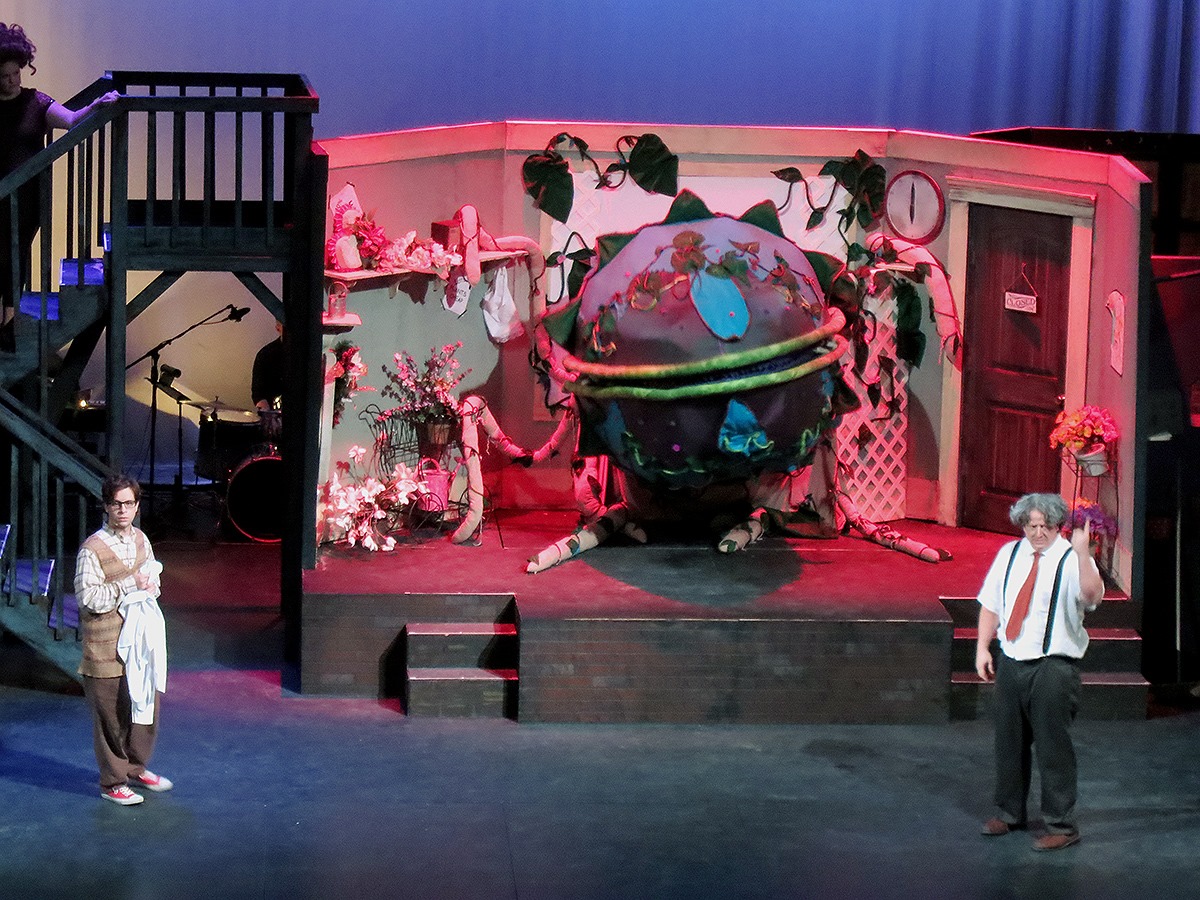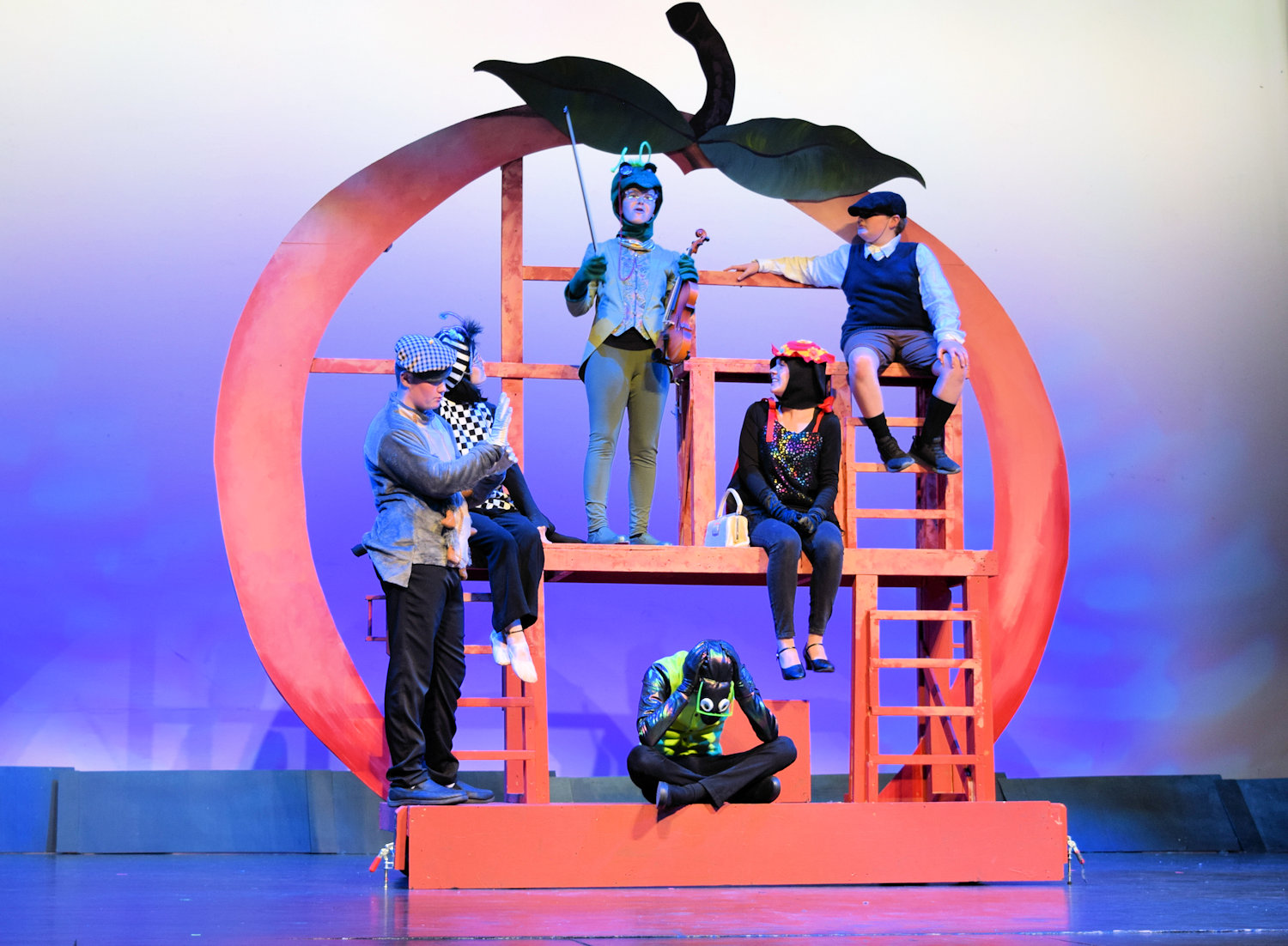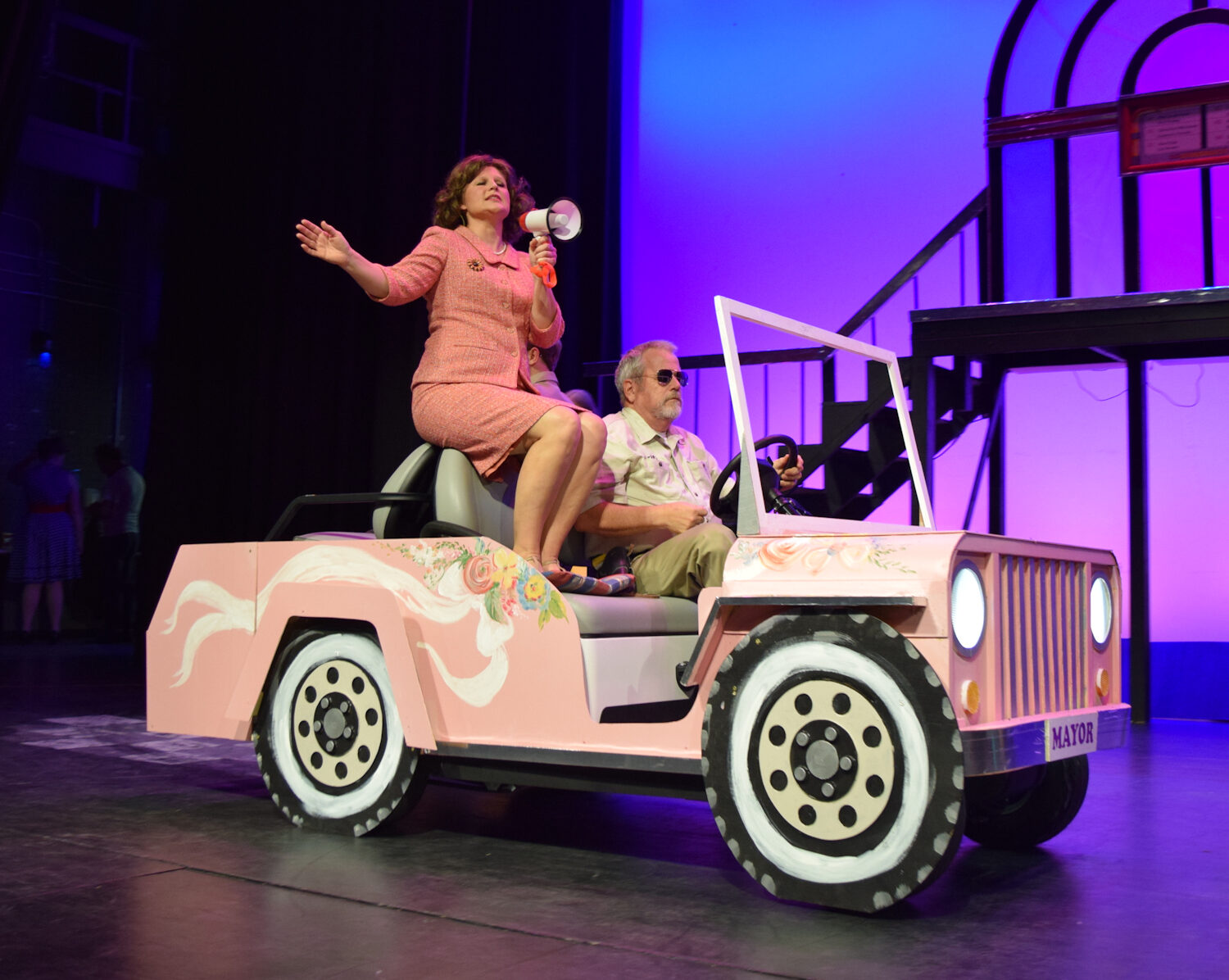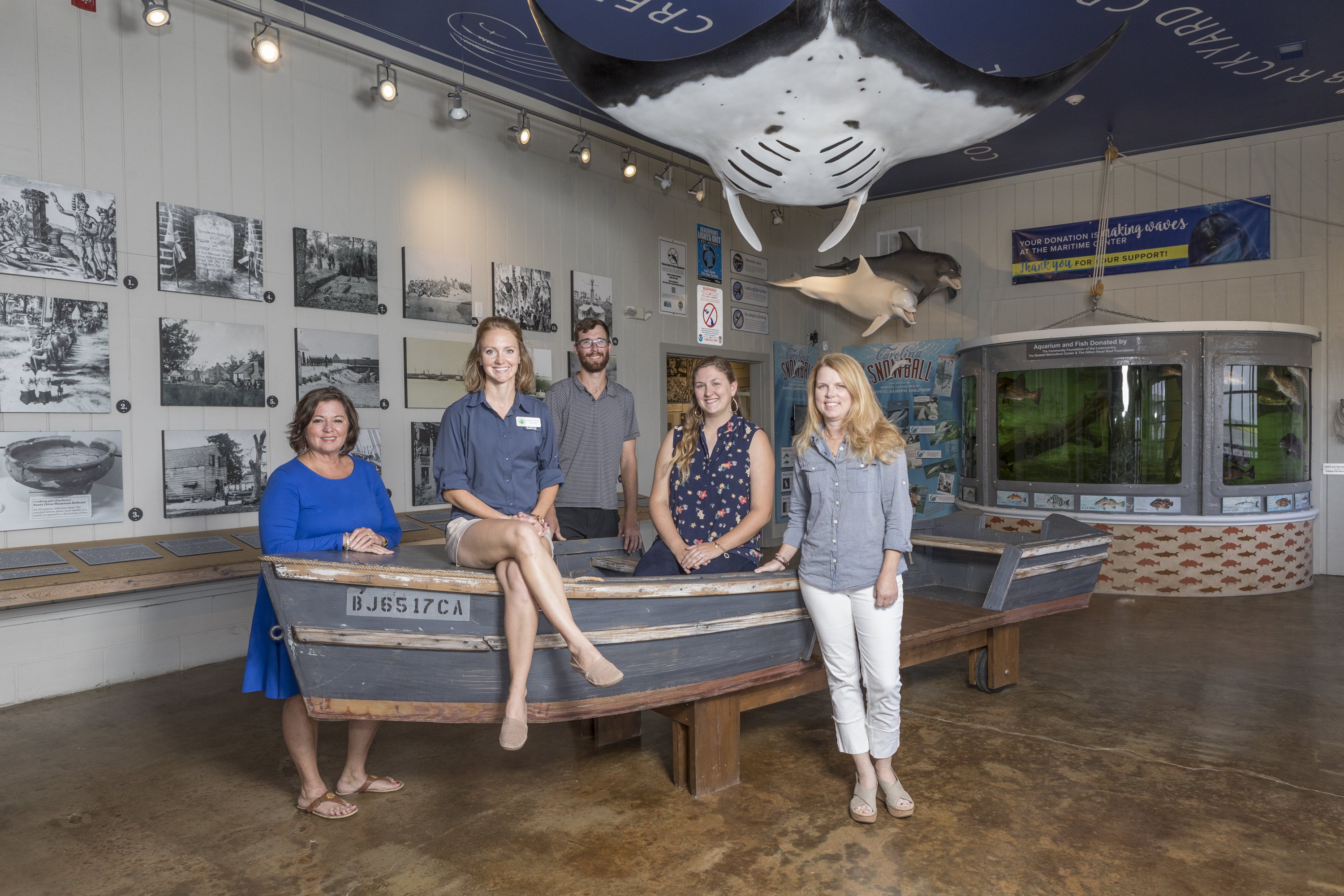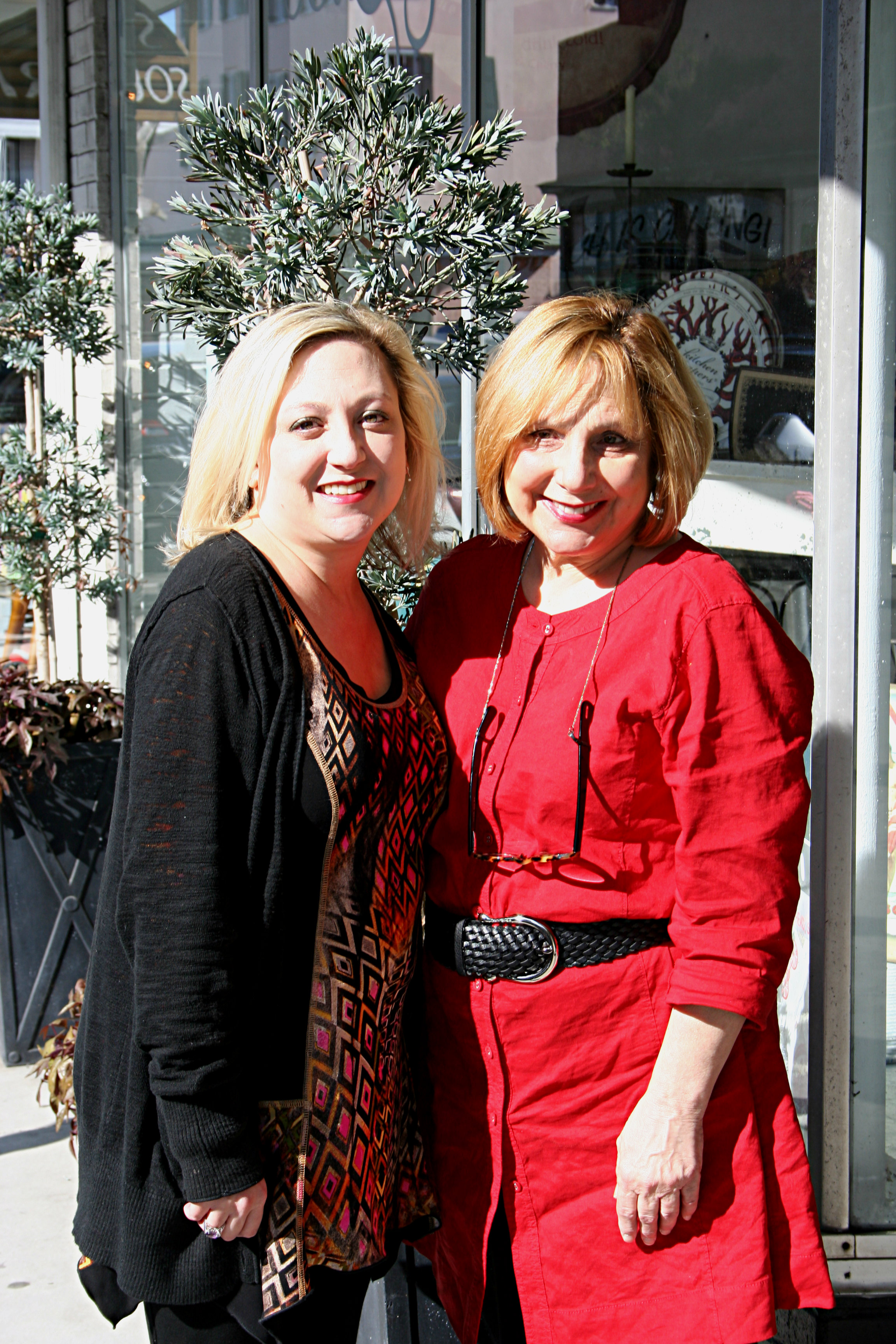GREG RAWLS AND MARY ANN FORD
Set Creation Tag Team Brings Musicals to Life at USCB Performing Arts Center
story by JEANNE REYNOLDS photos by SUSAN DELOACH
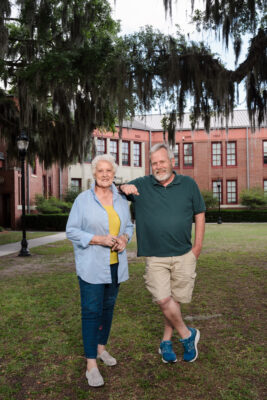 One of the first things you need to know about creating a set for a theater production is “the 20-foot rule” — it only needs to look convincing from 20 feet away. If it looks good any closer, you’ve wasted way too much time and money on details the audience will never see.
One of the first things you need to know about creating a set for a theater production is “the 20-foot rule” — it only needs to look convincing from 20 feet away. If it looks good any closer, you’ve wasted way too much time and money on details the audience will never see.
And that’s important because local community theater set designers often have only a few weeks — not to mention limited budgets — to build and paint the backgrounds for each production. That’s certainly the case for Mary Ann Ford and Greg Rawls, the two-person team responsible for bringing musicals and plays to life at the University of South Carolina Beaufort Center for the Arts.
But when it comes to Ford and Rawls themselves, the opposite is true: The closer you look, the more fascinating details you find. Both bring impressive professional art careers to their collaboration, Ford as a muralist with clients around the world and Rawls as a renowned glass artist who exhibits in numerous area galleries. Together, they’ve created magic for Beaufort theatergoers for nearly a decade.
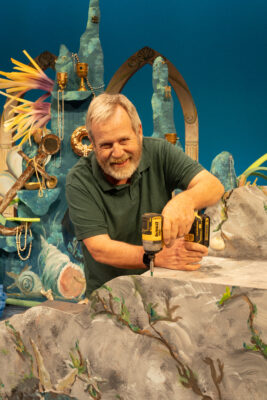 HAMMERING OUT A NEW ADVENTURE
HAMMERING OUT A NEW ADVENTURE
Like many in the Beaufort area, Rawls grew up in a military family. He was born in Germany, and lived up and down the East Coast before settling in Columbia in his high school years. He stayed there for college and graduate school, earning a bachelor of science degree in biology and a master of science in public health from the University of South Carolina. Service as a lieutenant in the U.S. Navy as an industrial hygiene officer followed, then a career with Alcoa North America as the company’s health and safety manager based in Charleston until he retired in 2012.
“Charleston seemed like a good idea at the time, but it was a little too big and crazy,” Rawls recalls. “I was looking for something smaller and quieter.” By then, his parents were living in Beaufort, so he relocated here and began renovating a house.
“I’ve always been handy and crafty, and a really good carpenter,” Rawls says. “I saw on Facebook that the Director of the Center for the Arts Bonnie Hargrove was looking for someone to do tech work. I told her I was more of a builder, and her eyes lit up.”
By 2015, he was hammering away on the sets for Grease, including building the show’s iconic car, Greased Lightning, and Rawls was hooked. He now has sets for Aladdin, Blithe Spirit, Jungle Book, Peter Pan, Little Shop of Horrors, Godspell, 9 to 5, Elf, Dancing with Our Stars, Tribute to Etta James, Conrack, Forbidden Broadway, Mamma Mia, Nunsense, Spamalot, and All Shook Up on his resume, plus the theater’s latest production, The Little Mermaid JR.
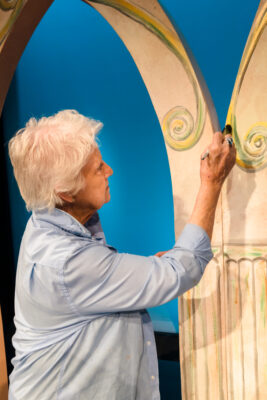 PAINTING ON THE WALLS
PAINTING ON THE WALLS
Call it coincidence, fate, or theater magic, Ford arrived in Beaufort at about the same time as Rawls (more on that in a moment). But her desire to paint and create has been with her since childhood. She attended children’s art classes at The Cleveland Museum of Art while growing up in Cleveland Heights, Ohio, and later at the Cleveland Institute of Art and Western Reserve University.
Following a divorce in 1970, Ford raised three children while building a career in the advertising world with J. Walter Thompson in Washington, DC, and Bank of America in San Francisco. Meanwhile, she continued to feed her love of painting with art classes at the Corcoran Gallery School of Art in Washington, DC, the Torpedo Factory in Alexandria, VA, the de Young Museum of Art School in San Francisco, and with Ken Auster in Laguna Beach, California. Once she retired from the corporate world, she was able to pick her paint brushes back up full-time and started a new career in 1992 as a muralist with clients throughout California, Seattle, Dallas, Charleston, Hilton Head, and Argentina.
Along the way, Ford also enjoyed acting in small local theaters. No wonder, when she arrived in Beaufort in November 2013, her ears pricked up when she heard about an upcoming Shakespeare in the Park production.
“I tried out for Macbeth and got the part of the number one witch,” Ford says. “Then they said they also needed someone to paint the sets.” Ford raised her paintbrush for that task too, and, soon after, was snagged for the set-painting gig at USCB.
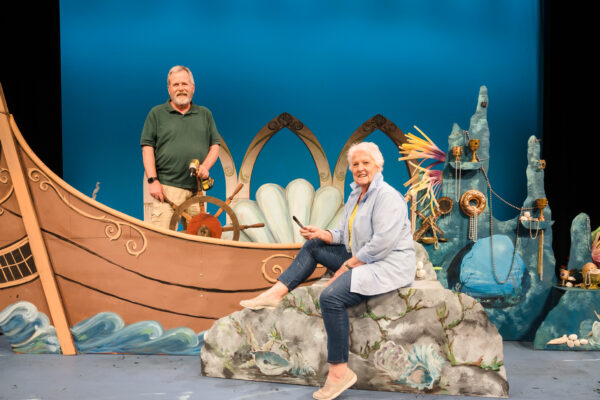 CREATING MAGIC ONSTAGE
CREATING MAGIC ONSTAGE
“There’s a balance between the artistic and the practical,” Rawls says of the set team’s work. “We’ve got to enhance the story but also keep within budget.” Adjusting, compromise, and flexibility are key, the pair agree.
The wheels start turning about six months in advance when Ford and Rawls learn which shows are planned for the coming season. The theater typically hosts four productions per year — two adult shows and two children’s shows — plus annual events, such as Dancing with Our Stars, a fundraiser for the local nonprofit Child Abuse Prevention Association; the Nutcracker at Christmastime; and a few other locally produced variety shows.
“We put our creative minds together and figure out what we’ve got to do and what the requirements are, and we work with the director and find out his or her vision,” Rawls says.
Sometimes the collective brainstorming results in a unique look the original Broadway show could never have imagined, such as the production of Godspell set in the Lowcountry, complete with shrimp docks and a shrimp boat named Prince of Tides.
“The audience could really relate to it,” Ford says. “It fed right into their memories and love of the area.”
The theater’s small size limits some of their options. The wings — the offstage areas on each side of the curtain — are only 20 feet deep, there’s no backstage access, and the fly space — the area above the curtain where sets can be raised and lowered — is minimal. And just because the show schedule is planned six months in advance, that doesn’t mean actual work on the sets can begin then because other shows are running in the meantime. That usually leaves the duo two to three weeks to construct and paint their sets before the curtain rises on a new production.
Together, they’ve worked on more than 34 shows since 2014. Ford says her favorite productions include Grease and Beauty and the Beast, while Rawls leans toward Little Shop of Horrors because it was so challenging, involving much more than hammering boards together.
“The more tech savvy the world is, the harder it gets to create that magic on stage and help the audience embrace the magic of live theater,” Rawls says. “We had to create an eight-foot plant that could eat people, and be able to get it on and off the set. That machine was sheer genius.”
“The technology of a show tends to take a back seat,” he adds. “The choreographer and director get the bouquets. But there’s a saying in theater, without tech, you’re on a cold, dark, empty stage, naked, and no one can hear you.”
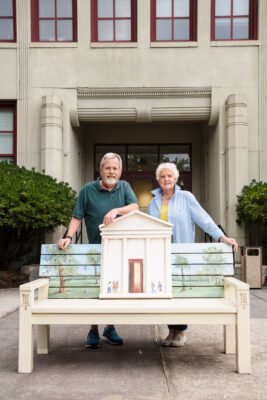 A BIGGER ROLE IN THE COMMUNITY
A BIGGER ROLE IN THE COMMUNITY
As big as their passion is for theater, both Ford and Rawls play other key roles in the community. The pair has worked together on several storytelling benches, including one in front of the theater that tells the history of USCB, and another in the Waterfront Park that shows what it looked like before the park was built. You also can see Ford’s metal art Civil War figures and paintings at Hilton Head’s Fort Howell and murals at Hilton Head Resort. The City of Beaufort also commissioned her to paint a series of huge wooden figures — nutcrackers, soldiers, wrapped packages, and Santa in a sleigh — to decorate the park during the holiday season.
Rawls, meanwhile, is active in another popular Waterfront Park event: the annual DragonBoat Beaufort races that have raised $250,000 in the past 10 years to support local cancer survivors. He’s been involved with the nonprofit for 12 years, serving as a coach and helping with marketing and graphics. This year’s races are Saturday, June 24.
Ford has donated paintings for the American Cancer Society, Ronald McDonald House, and other local charity fundraisers. She also shares her talents by teaching workshops for the Society of Bluffton Artists. But the classes she offers at several area retirement homes and special needs facilities hold a special place in her heart.
“It’s therapy for them in a way,” she says of her elderly and disabled students. “They count on me, and I wouldn’t dream of letting them down. There’s a trust you can feel. I learn patience and a feeling of hope. There’s so much joy.”

